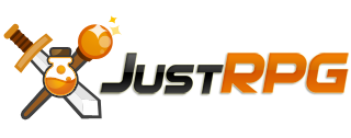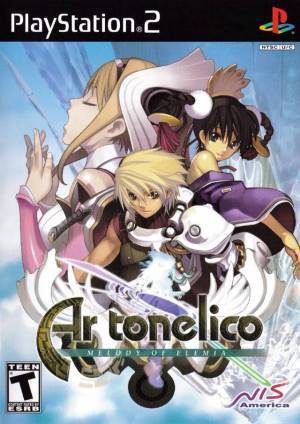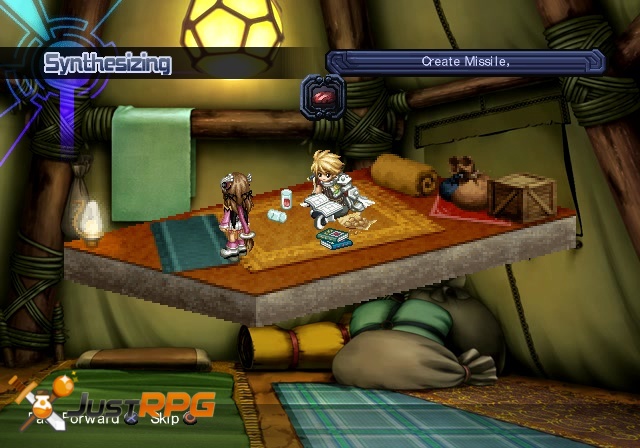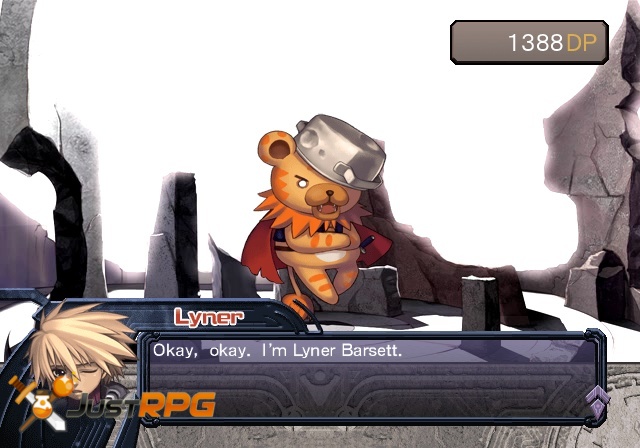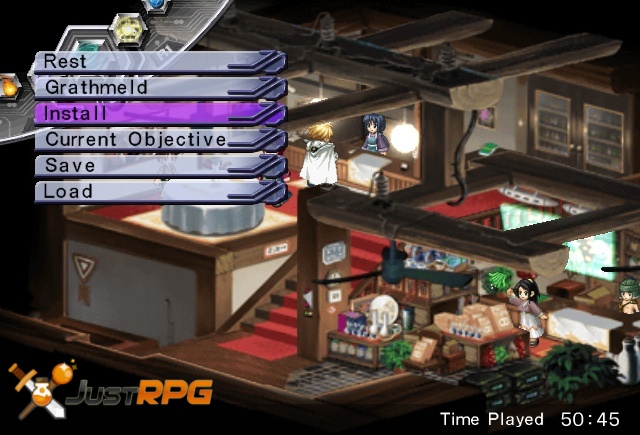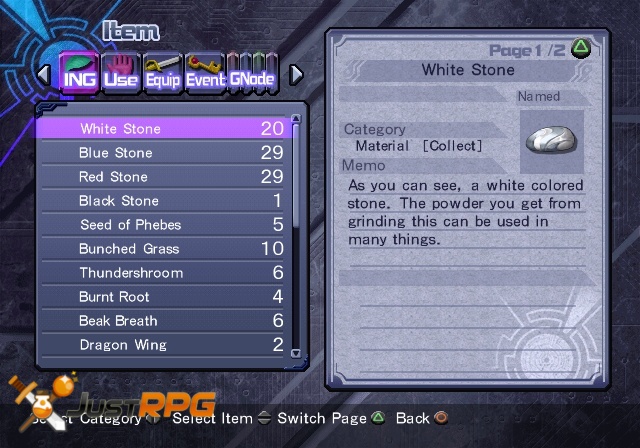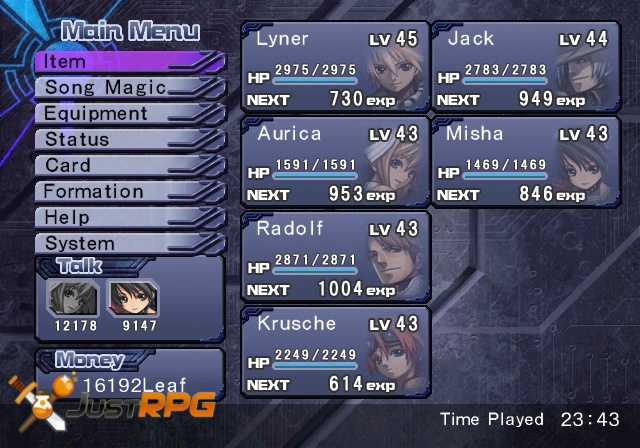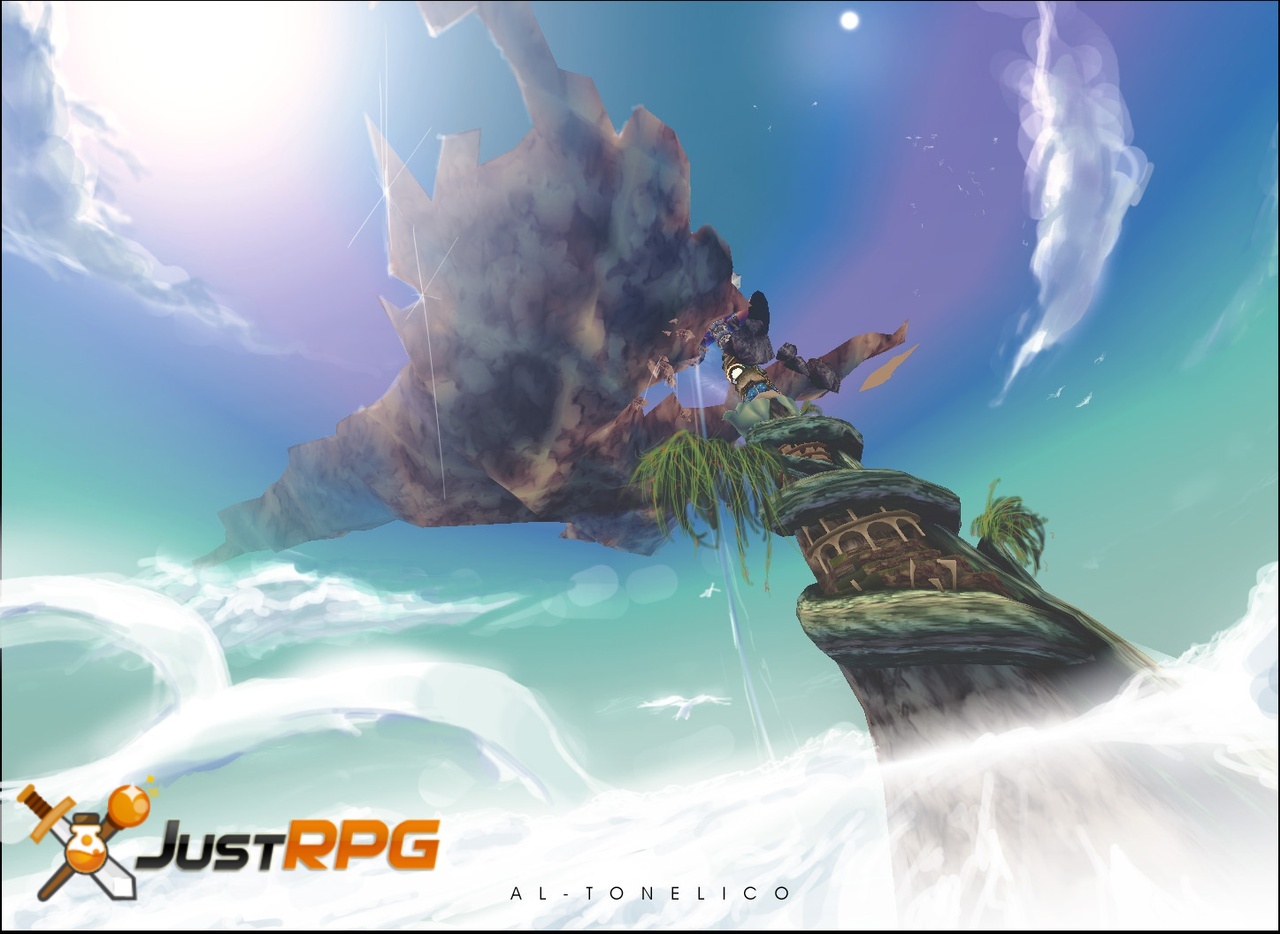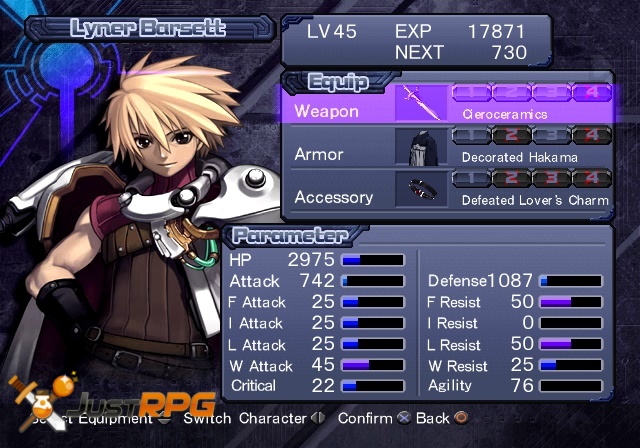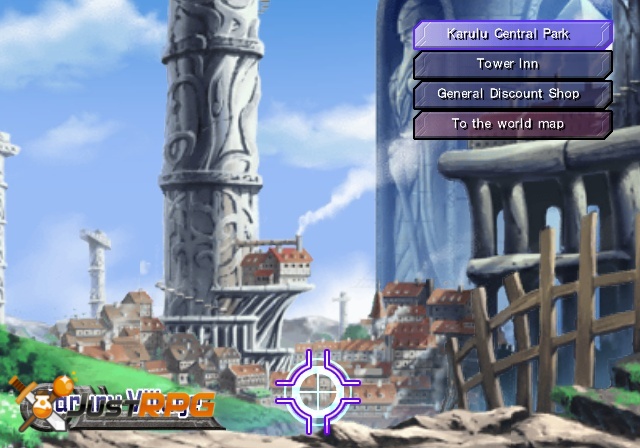Ar tonelico: Melody of Elemia is childish graphic novel fused into an RPG.
Full Review
Ar tonelico: Melody of Elemia Review
“You never forget your first…” Even with the tagline adorning the game’s box, Ar tonelico: Melody of Elemia, the newest Gust game released by NIS America, seems determined to invoke a very different image to the minds of players than your average RPG. But, is Ar tonelico being quirky for the sake of quirkiness, or is it truly a world apart from what we have known before?
If you’ve been following Gust, or indeed anything from NIS, or even took a good look at the cover art, you can probably guess that Ar tonelico is a proud member of the Save the Sprites movement. Yes, PS2-quality sprites return again, and truth be told Ar tonelico isn’t breaking any new ground here, so there’s not a lot to say about it. What is noteworthy, though, is the game’s load times. They’re really short, to the point that the game probably only loads data on the fly as it’s needed. Sadly, there’s another giveaway that this is what’s going on; mid-animation load times. This doesn’t happen very often in other games, so the first time the game had a little hiccup while I powered up a spell, there was a split second I thought it was going to freeze on me. Fortunately nothing so devastating does happen, but all the same, the jarring, unpredictable little hang-ups really wear you down after a while.
With a subtitle like Melody of Elemia, you should probably assume that music is a major focus of the game, and similarly would expect some good things out of the soundtrack. And while it’s a little more understated than you’d think, the music is indeed good. In other words, songs tend to blend into the background while playing, rather than jumping out and grabbing your attention. Still, if you take a minute to really pay attention, they won’t disappoint. Voice acting is a little shakier, but is within the normal range for VA these days. Though, I have to admit, characters using the same two pre-battle taunts every single fight was a bit much.
Battles, meanwhile, clearly make an attempt to do something different. For starters, you’re only allowed to use one of your mages at a time, but more significantly, they work completely differently from the rest of the team. While Reyvateils (the proper name for mages in Ar tonelico) are very frail physically and have poor HP like the mages of many other games, a vast majority of enemies cannot hit them at all, and even those who can must take a turn to target the Reyvateil before actually hitting them, giving you a chance to defend her. This is important because essentially all your battle attributes depend on the Reyvateil. Once you select a Song (spell) to use, it will charge continually until the Reyvateil is told to cast it, or she runs out of MP. This boils down to a vast majority of your damage being dealt by spells. Additionally, charging Songs and having your fighters hit the enemy builds synergy between the party members. At certain benchmarks, this will open up a host of effects, including letting fighters access their skills, increasing the charging speed of Songs, and even making enemies drop more items. However, to build additional levels, you also have to let Songs resolve (that is, actually attack and not just charge them), making it even more important to keep your Reyvateil alive and kicking.
Items are a bit more important in Ar tonelico than in many other games because it features a vast item creation system. While creating items is as simple as knowing a recipe and having access to the items needed and a save point, as the game progresses the items you can make are made from increasingly more complex items, often needing parts that are themselves items you must create. Fortunately, if you don’t have any on hand, the game will inform you and immediately take you to create the needed item (and so on down the line as items require created items require created items, etc.). Additionally, equipment can be equipped with Crystals, a recurring ingredient in item creation, which alter its attributes. For example, giving armor more defense or adding fire damage to weapons.
Beyond that, Ar tonelico’s dungeons have some very simple puzzles, largely along the lines of barriers to progress which you use fireballs to break apart. While there is more variety than that, the basic approach remains the same, and ultimately it’s not a significant part of exploration despite being used frequently.
Breaking no new ground is again the driving order for the plot. In short, bad things called Viruses have woken up and begun attacking Platina, the high-tech city atop the tower of Ar tonelico. Lyner, a Knight of Elemia, is sent to the ‘lower world’ by his mentor, Sherulia, to obtain the Hymn Crystal Purger, the only thing that will harm the beasts. Lyner crashes his airship on the way down, and thus he’s immediately presented with the twin problems of getting the Hymn Crystal and finding a way back. Along the way he enlists the aid of Aurica, a demure Reyvateil working for the Elemia church, Misha, another Reyvateil who immediately greets Lyner as an old friend, and a cast of other assorted do-gooders. While the story does a fair job of justifying your actions, and the characters are likable enough, there’s really nothing here to hook players, leaving Ar tonelico a painfully average little game.
Or that would be the case if not for Diving. Diving is effectively the system used to gain new spells for your Reyvateils, which are bought using DP earned in battle. Of course, this doesn’t really get across what happens. As explained to Lyner (and thereby the player), Songs are an expression of a Reyvateil’s deepest and most powerful feelings. Therefore, to craft new Songs, she must develop, understand, and shape these feelings. That’s where her partner, in this case Lyner, comes in, via Diving. Lyner effectively must visit various regions within the Reyvateil’s mind, exploring it with her, and helping her overcome the trials within. These take an absolute host of forms, and on the whole have a very intimate feel. Indeed, even Lyner comments that he often feels he’s violating some sanctuary while Diving, which makes it somewhat less awkward for the player but still adds to the volumes of suggestive dialogue on the matter. By which I mean that the game takes every opportunity to equate Diving with, well, sex. It’s incredibly overdone, honestly, since the dives themselves are really perfectly innocent, and the intimacy of it was apparent anyway. Still, the Dives themselves add a lot of personality and development for the Reyvateils, and are definitely the best reason to play the game.
If the above wasn’t a strong clue, essentially this means that Ar tonelico has a strong ‘dating’ element, in which you must regularly converse with your Reyvateils, use them as much as possible in battle, and all that. To a point, it’s somewhat funny, since in actual fact, Lyner is a very dense individual (though admittedly the nicest guy you could ever meet) with no noticeable feelings for the female race, while each of the Reyvateils display strong affection for him. Anyway, this also makes it somewhat unsurprising that Ar tonelico has several story paths based on which girl Lyner ‘chooses,’ adding definite replay value for those that are interested in such things.
All told, for all its quirks, Ar tonelico is a very average game, enjoyable without standing out, and sadly forgettable. Still, there are certainly worse ways to spend a few weekends, and there’s always that chance the game will carve a little niche in your heart.
Backdrop
.hack Part 1 Infection (Dot Hack) begins with a bang. Something disastrous happens to your character‘s real world friend, while innocently playing a 20 million-subscriber base, wildly popular online RPG game (MMORPG), The World. To unravel the mystery of your friend’s misfortune, you become an online, ingame rogue hacker, exploring every corner of The World, even some virus-infected ones.
The hero is armed with the special skills of Data Drain and Gate Hack, and some colorful, talented fellow adventurers to fill the two other available party slots. Different adventurers must accompany you depending on the plot‘s development. You have some control over the others in your party, including upgrading them through trades or gifts. You can play only a single class, Twin Blade. Other characters are from different classes, with varied strengths and weaknesses, from a mage type (Wavemaster) to a bully (Heavy Axeman).
Gameplay
Gameplay takes place in three principal areas – towns, fields, and dungeons. Towns house The World’s servers. There, the player can save the game, buy magic scrolls and useful and unique items, store items, buy equipment, and talk and trade with lots of other players in character online. One town has an unusual ranch to check out, a patent homage to an enduring feature of just about every Final Fantasy.
The town’s Chaos Gate provides instant teleportation to a particular wide-open Field, containing monster encounter hotspots, a mystical spring, treasure, and lots of mysterious food. You enter three distinct keywords, some known at the game‘s onset, and others learned through play. Whatever keywords are entered, the difficulty level of the destination is helpfully revealed. This prevents a low-level party from being massacred. Once the keywords are entered, you travel through the Chaos Gate. (You can enter specific keywords learned to continue the plot, do side quests, or do unlimited exploring. Or, you can instruct the Gate to enter random keywords, and take your chances. There‘s also an option to enter any keywords you wish from a word list.) Every Field houses a single Dungeon. The dungeons, where you spend much of the game fighting for your life, are not overly large in size, and always range between three and five average levels.
Many have compared Dot Hack to Phantasy Star Online Episode I and II (PSO) on the Gamecube. Let us gently discredit this. We feel Dot Hack has far better graphics than PSO. The Fields and Dungeons contain many colorful, over stylized backdrops and settings, including weather effects. Dot Hack’s monsters resemble the beautifully-drawn monsters of the later Final Fantasy’s. Dot Hack’s world is gigantic with a seeming infinite number of locations to explore. PSO’s world is relatively small, and plot is threadbare, with meaningless, though fun, side quests, which instill no enthusiasm in the player. Dot Hack’s plot is deep and complex, with each subplot advancing the story just a little bit further. (Remember though, the end of this game in no way comes close to wrapping up the story, to be completed in the three games to be released later this year.) One visual treat, however, was lifted directly from PSO – the cascading rings that accompany the teleportation of characters to and from different areas.
Combat
Dot Hack’s combat engine can best be described as modified real-time. Much like the action-RPG, Kingdom Hearts, button mashing can be effective to beat monsters. Monster combat icons appear as large yellow twirling landmarks. As you approach, the landmark dissolves, monsters come at you big-time, and, undoubtedly, players will feel a healthy adrenaline rush. Some of Dot Hack’s many monsters do not stand around waiting to be pummeled, rather some you need to catch. Dot Hack lets you turn combat almost into a turn-based affair. The player needs only to hit Triangle in the middle of battle to pause the game instantly. From there the player can give orders to the others in the party, anything from healing someone, reviving another, casting a spell, designating a target monster. Without jeopardizing your party from the hailstorm of monster blows, combat becomes a calmer, more strategic, experience. This will help the many action-challenged. Camera angles play a big role in successful combat. You must be facing a monster to do any damage. As in many games, manipulating opposing environmental elements, like fire vs. water, is a key to successful monster combat.
Dot Hack’s cyberspace setting provides a wealth of Wow-inducing outbursts. The Data Drain option in combat is a great example. When a monster’s approaches zero, the player can Data Drain to reduce a horrendous, gigantic steel robot, for example, into a sniveling, puny monster, easily defeated with a single blow. Data Drain always results in a nifty, rare item or essential Virus Cores so you can Gate Hack areas of The World now closed, but needing investigation. One bad side effect – if you defeat, a Data Drained monster, but a single experience point is earned. One REALLY bad side effect – if you Data Drain too often without giving the skill a rest, you may overload and explode. Game Over. In the case of Boss monsters, Data Drain works the same, but what remains is no sniveling puny monster, but a full-blooded slightly less tough monster. All of this makes for interesting and captivating combat, a large part of the game.
Fresh Features
Dot Hack is replete with new and interesting features that kept us riveted.
To start, the entire background and story of a real world gamer becoming a rascal hacker, penetrating deep into a virus-infected online game, is quite novel. Combine this with Dot Hack’s emulating the look and feel of an online game universe. (Message traffic on the web shows many gamers mistakenly believe Dot Hack is a real online MMORPG, along with monthly fees! No real Internet connection is required.)
Just like in the real word, Dot Hack replicates your excitement level when “New” appears before a popular forum or on your email screen. Some of the game involves receiving emails as the plot develops, as well as new, crucial information surfacing on The World’s Board. (Look out for emails challenging you to a strange game of Tag.) The online game world looks very familiar with a bunch of characters wandering around the game’s towns, with the ubiquitous balloon icons talking typical “trash” to each other, even criticizing “newbies“.
Combat grippingly called for surprisingly strategic decision-making to succeed, not related to the usual attack or defend choices. Do you go for experience and upgrade your character or try for some special equipment or a Virus Core, vital to Gate Hacking? The innovative control of other party members became second nature to us after some practice. The game rewards a player taking chances, like entering a Field or Dungeon rated 5 levels above the player’s current level. On the other hand, the game scoffed at players entering areas much lower rated the their current level, by awarding negligible experience points for victory.
Dot Hack takes progress reports to a new level, by slowly unlocking books that contain much in the way of statistics and information. There’s even a monster compendium with tips for defeating them.
Some might complain about the minimal “Save Game” ability, but we thrived on it. You explore a very hostile cyberspace environment without the facility to save. Only in a server-hosting town is saving possible at the local Recorder. We may be a solitary voice in the Wilderness, but we like this throwback to the good old RPG days. Those of you old enough to remember the Wizardry series, may recall those fingernail-biting multi-combat treks back to the Castle just to save the game. In case you’re really stuck deep in a dungeon, a common item will teleport you to the outdoor field, from where you can simply gate back to town from the command menu.
Many pieces of equipment come with distinctive powerful attack, healing, and status skills, essential to combat dominance. The player must tradeoff whether to equip something that will raise defense or offense or something less vigorous that lets you use a powerful skill. Trading is the most successful way to upgrade equipment.
In a first, Dot Hack comes with a 45 minute anime video. This gives some great background on what’s going on in The World, as well as provide clues for completing the game. In a nice twist, voiceovers for game speech can be set for Japanese or English presentation. Listening to the authentic Japanese voices really keeps you glued to the game.
Though some may scoff at what follows as meaningless, we liked the game’s unlocking of some nifty new “toys” to like, some only available when the game is cleared. You can unlock many different background music play lists. Tired of creepy tunes, just switch to something more upbeat, or futuristic. Just like real world gamers, who constantly change their desktop wallpaper, new and different wallpapers are unlocked along the way. Some are concept art of characters, while others are full blown anime renditions of the characters. This makes for great fun, and seems to pump additional energy into the game. As you progress over a dozen special cut scenes or movies will become viewable after defeating the game.
Though Dot Hack’s extras and new wrinkles enhance the RPG game experience, much of the gameplay will ring true to those who enjoy RPG‘s. Expect plenty of exploration in a huge 3D world, frequent monster combat, tons of treasure to earn and discover, upgrading your character’s weapons and armor, and needing to level before tackling pivotal story dungeons. The status screens for the characters and all equipment are well laid out and easy to grasp.
Time for Completion
Game length in hours always concerns many purchasers. A short RPG normally takes a lot of flack, and many online are asking about Dot Hack‘s time for completion. (Some have questioned whether Bandai should have released a single 80 hour game for $50, rather than four 20-hour games for $200 for a single story. This matter is beyond the scope of this review, but our high opinion of this game as a standalone is obvious.) Our experience, playing the plot without doing side quests or extra exploration, is in the 12 to 15-hour range. Players side-questing and extensively exploring, aside from the main plot, can expect to spend 25 hours to complete the game. You can even continue to advance your character, after game completion, to get a jump start on Part 2 due in May. In the next game, your character can be imported from Part 1.
Furthermore, imagine trying to explore every nook and cranny of the fields and dungeons accessible by a large number of 3-word combinations. Doing that would put the game in the 50-hour range, if not more. However, at a certain point, new items dry up, and a single experience point is earned for any defeated monster, no matter how tough.
Shortcomings
While, as is evident above, there is much to recommend in Dot Hack, certain concerns to varying degrees deserve mention.
From the “Why oh why did they leave this out?“ File. Pregame game board traffic and information about the Japanese version released months ago had many salivating for replaying the game in “parody” mode. This mode apparently converted all Dot Hack’s game world characters into satirical comedians. Sorry to say, this highly-anticipated feature is missing from the version released here.
The game requires massive amounts of button pressing. Every item or treasure uncovered from combat victories or exploration (opening chests, searching expired adventure remains, collecting food for Grunty’s, as examples) must be confirmed with a button press. When there could be 50-100 such occurrences in a single dungeon or field, over the course of the game, finger cramps seem inevitable. Baldur’s Gate: Dark Alliance also required lots of bashing for buried treasure and chests, but the items literally flew into your inventory, a much better way to handle this.
The manual is woefully terse and lacking in some crucial information and guidance. While the ingame tutorials fill in many of the gaps, one extremely important gameplay feature is missing from both the manual and tutorials – instructions on control your characters directly during combat.
Final Word
We got a kick out of Dot Hack. The feeling of “just one more dungeon” dominated our lives for the 3 days to completion. The engaging environment held our attention without much effort. The strategic nature of combat, plus the convoluted plot kept us going for hours on end. The constant unlocking of both frivolous and important gameplay features created a “what’s next” anticipation. Now, if I could only read Japanese better, Dot Hack Part 2 is already out in Japan!
Final Grade: B
Final Verdict: 80%
